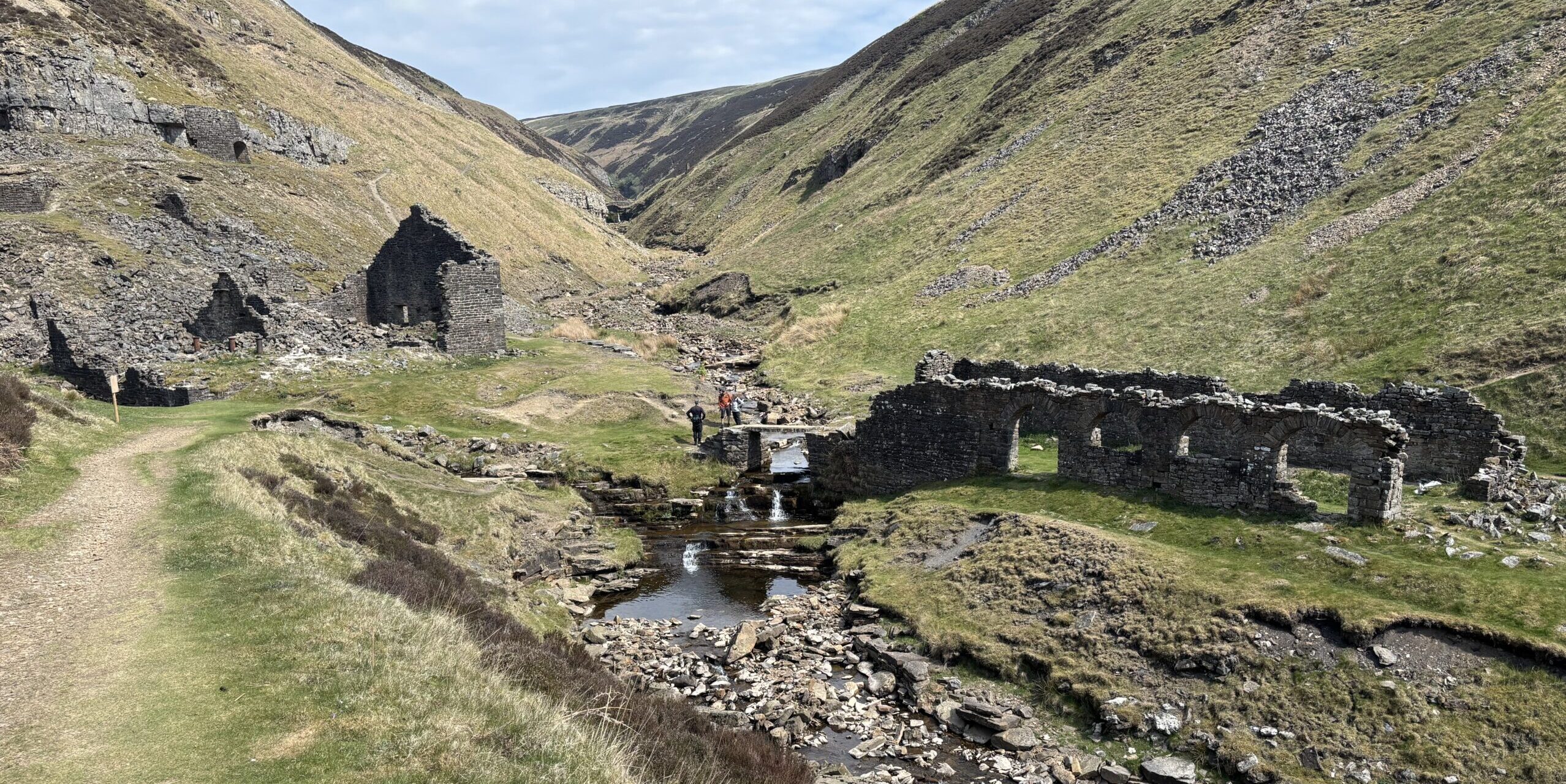
On the Coast to Coast, no two journeys are the same, and that’s the beauty of it. Between Keld and Reeth, walkers face a choice: the low route through lush Swaledale meadows, or the high route across wild moorland dotted with the remnants of its lead mining past. Your Coast to Coast is yours to shape, and for this stretch, we decided to head high. Trading riverside paths for big skies and a dose of industrial history, we set off to see what the high route had in store.
A warm welcome greeted us at Frith Lodge, homemade lemon drizzle cake and a brew whilst sat outside speaking to the owners Neil and Karen. This accommodation is situated on the hill above Keld with the most amazing views and wildlife.
We were treated to Karen’s home cooking for our dinner whilst chatting to two other groups of walkers about their day and other adventures that they had completed both in the UK and abroad. The view from the dining area overlooked the farmers field where there were lots of lambs chasing each other and a rare sighting of a black grouse. When discussing the next days walk to Reeth, it was suggested that taking the High/Low route gives you the best of both options, having previously walked the low route I was keen to walk the high route therefore this idea intrigued us and we decided that this is what we would do.
The following morning we had a delicious breakfast, one of my favorites’ eggy crumpets with bacon before setting out on the trail.
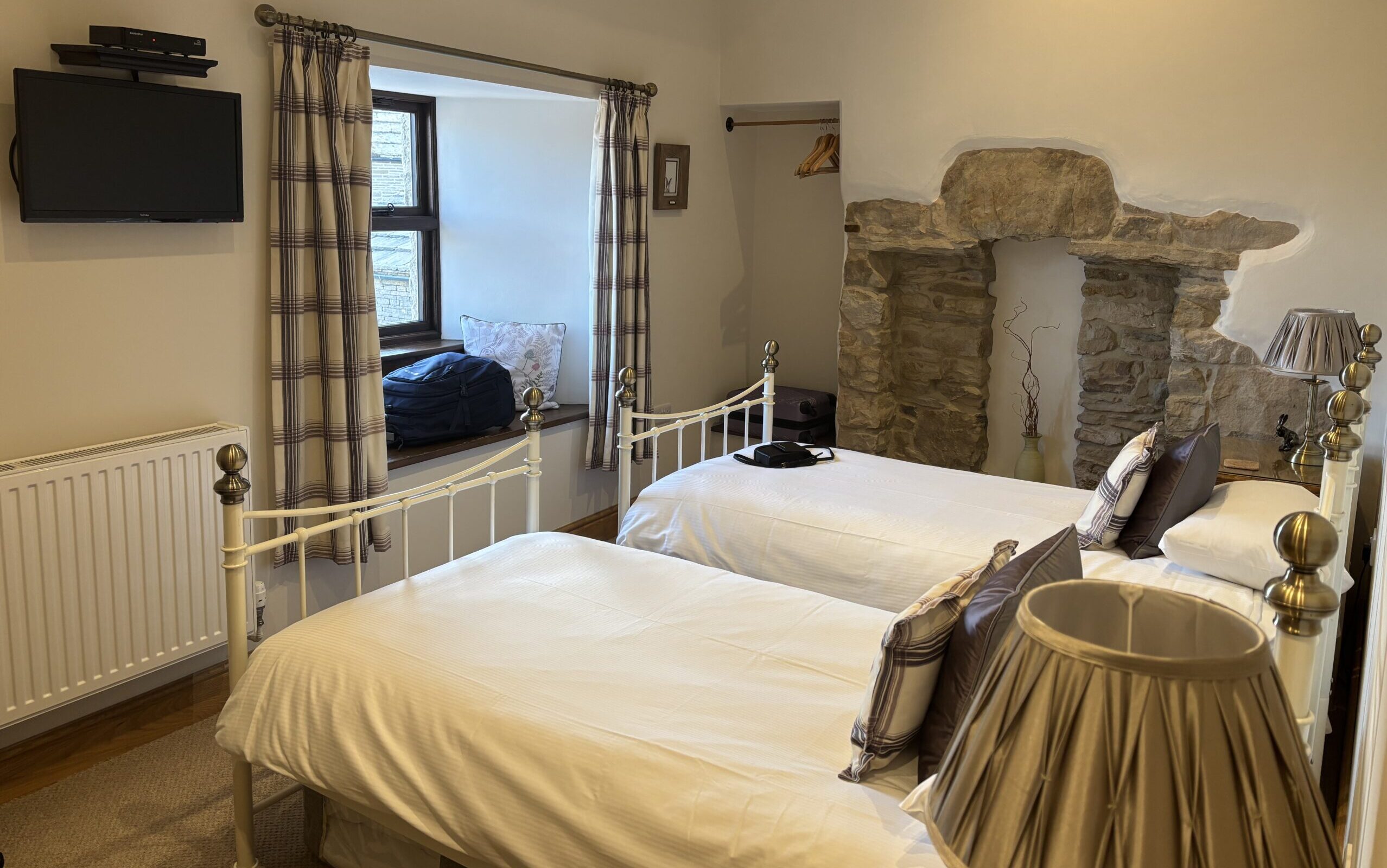
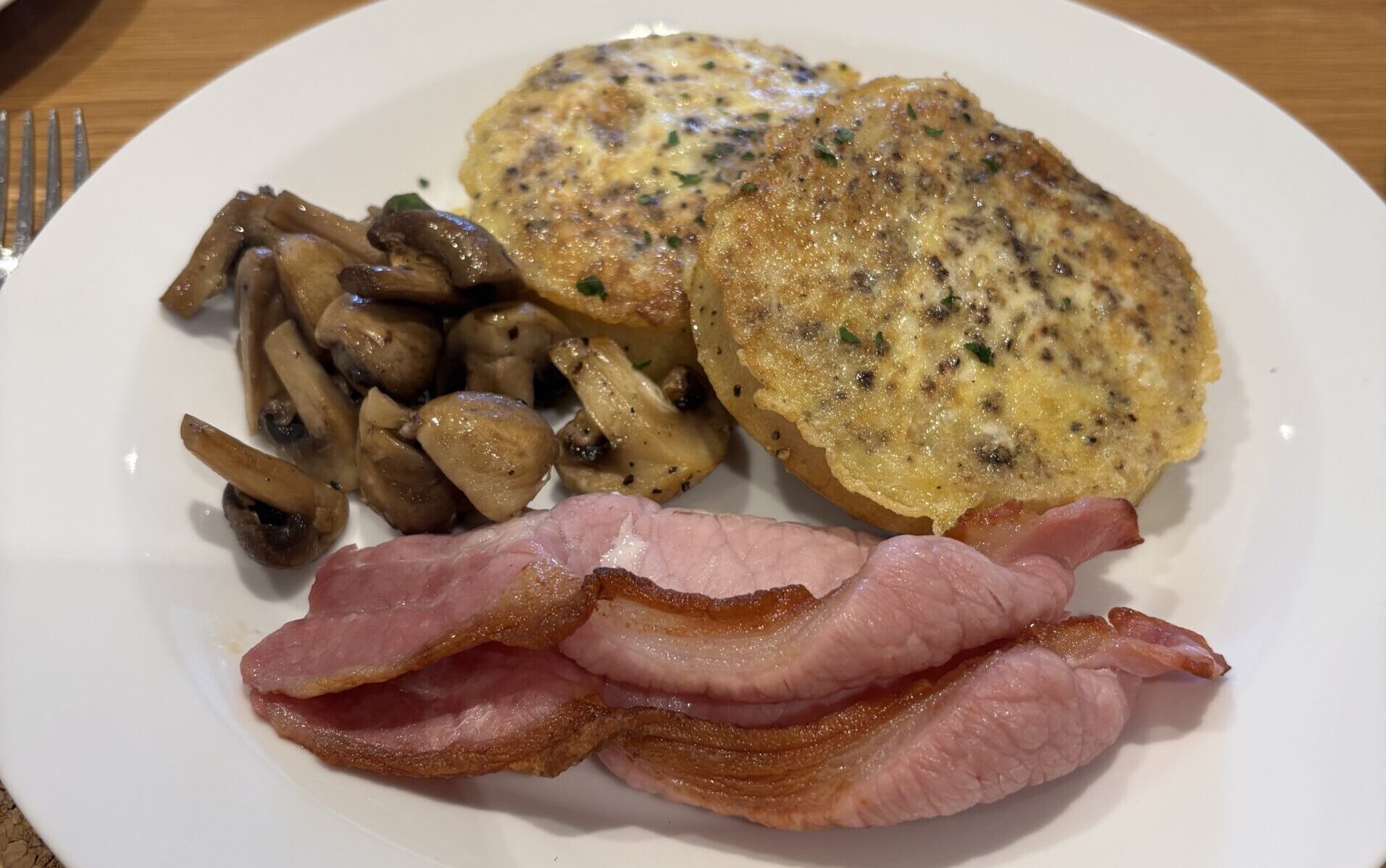
We followed the Pennine Way route back towards Keld then picked up the C2C route and followed the high route, where there is the promise of seeing the evidence of the industrial enterprise. We had our obligatory photo on the tractor (or lack of!) and just after we reached Crackpot Hall, a farmhouse once owned by the mine managers and dates from the 18th century.
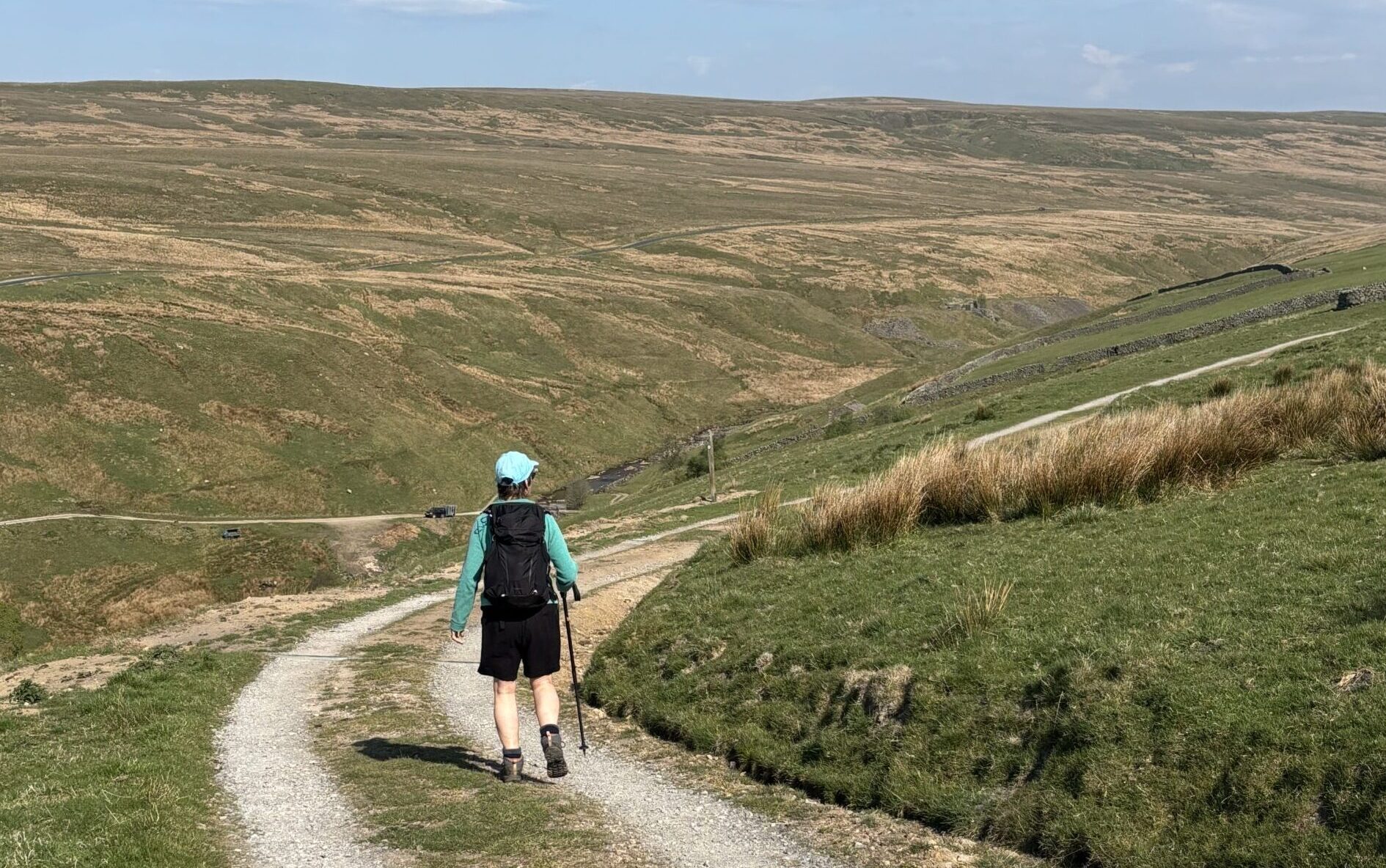
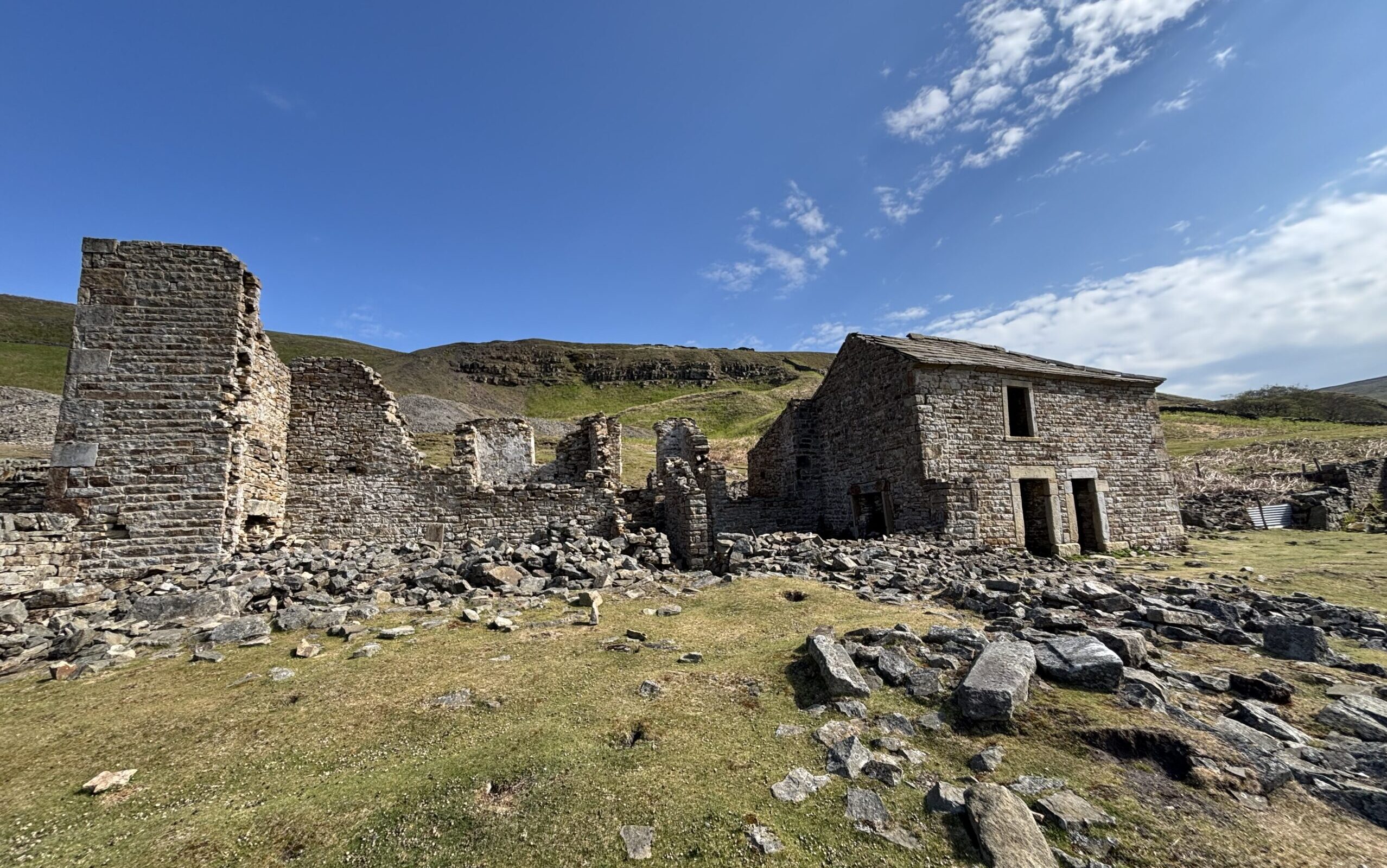
We continued on a narrow gorge called Swinner Gill which led us up to Gunnerside Moor, an expanse of moorland before heading down to the remains of Blakethwaite smelting mill, picturesque with the waterfall behind, the perfect place for a rest. The remains with their arched windows were a peat store, this peat was mixed with the coal to heat the smelting furnace. It has been suggested that the lead mining in Swaledale dates back since the Roman times.

At this point the high route continues up to Melbecks Moor, but we chose to take the river path leading to Gunnerside. We passed a disused mine shaft along the ridge before we dropped down passing bluebells, wild garlic, marigolds and out to the river bed where Sir Francis dressing floor is located. This dressing floor was where lead ore, Galena was crushed and sorted before being sent to be smelted into lead. There is also a woodland regeneration project taking place to encourage the growth of native trees such as birch, rowan and hawthorn.

We arrived in Gunnerside where there is a small café and pub, where you can get hot and cold drinks plus delicious treats. We had opted for a packed lunch from Frith Lodge as we were unsure of our lunch stop, the tasty wensleydale and homemade chutney sandwiches and bread and butter pudding cake were the perfect fuel for the next part of our journey.
The next part of the walk we followed the route up out of Gunnerside passing Lane Foot, more dwellings used for mining families. This amazing view of Swaledale shows off all the green fields and traditional dry stone walls.
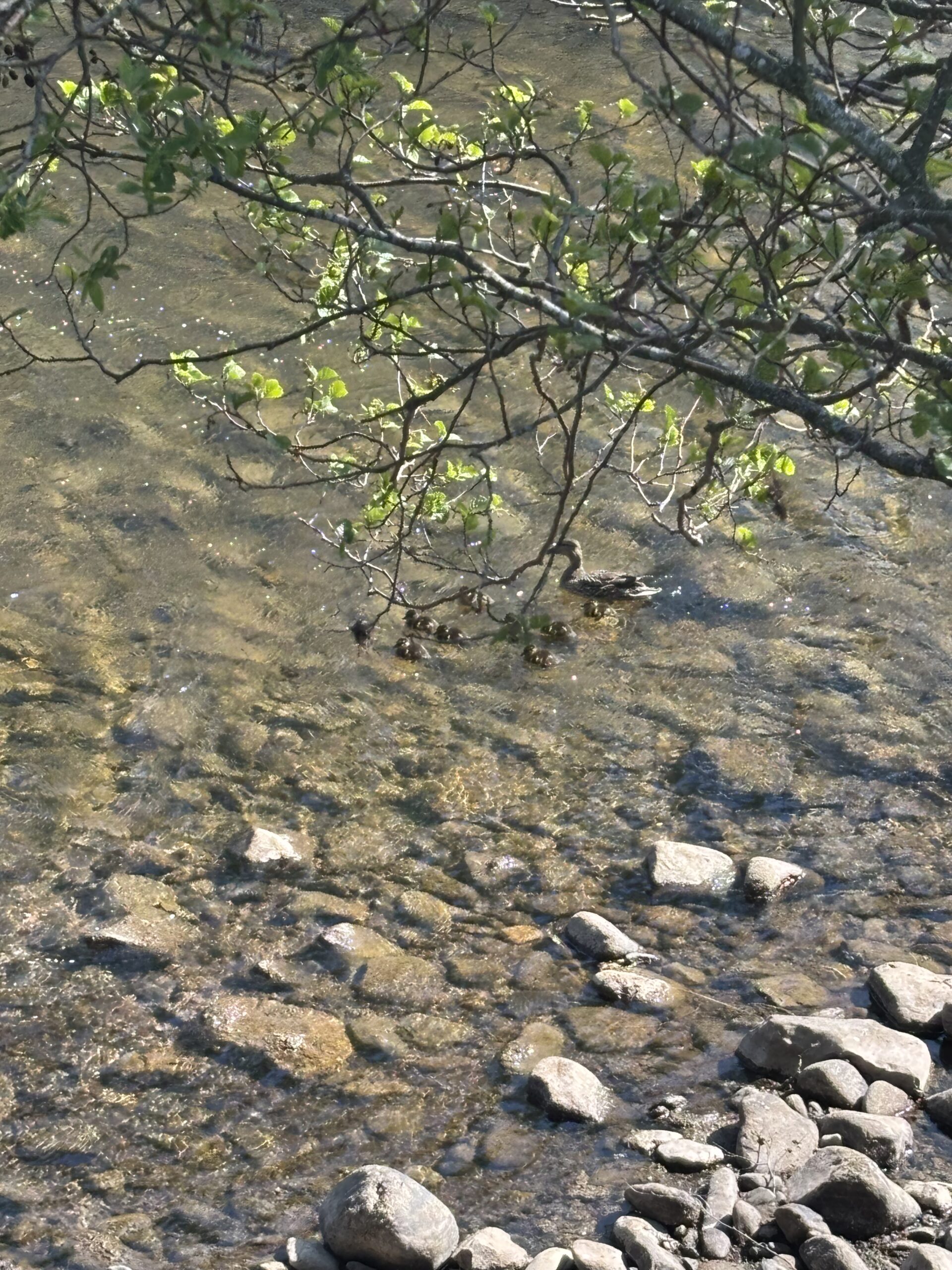
At Healaugh we descended to pick up the river path, where we saw two sets of ducklings, farmers rounding their sheep up with the traditional technique of using a sheepdog. We followed the river in to Reeth, a welcome finish to our walk on a warm day!

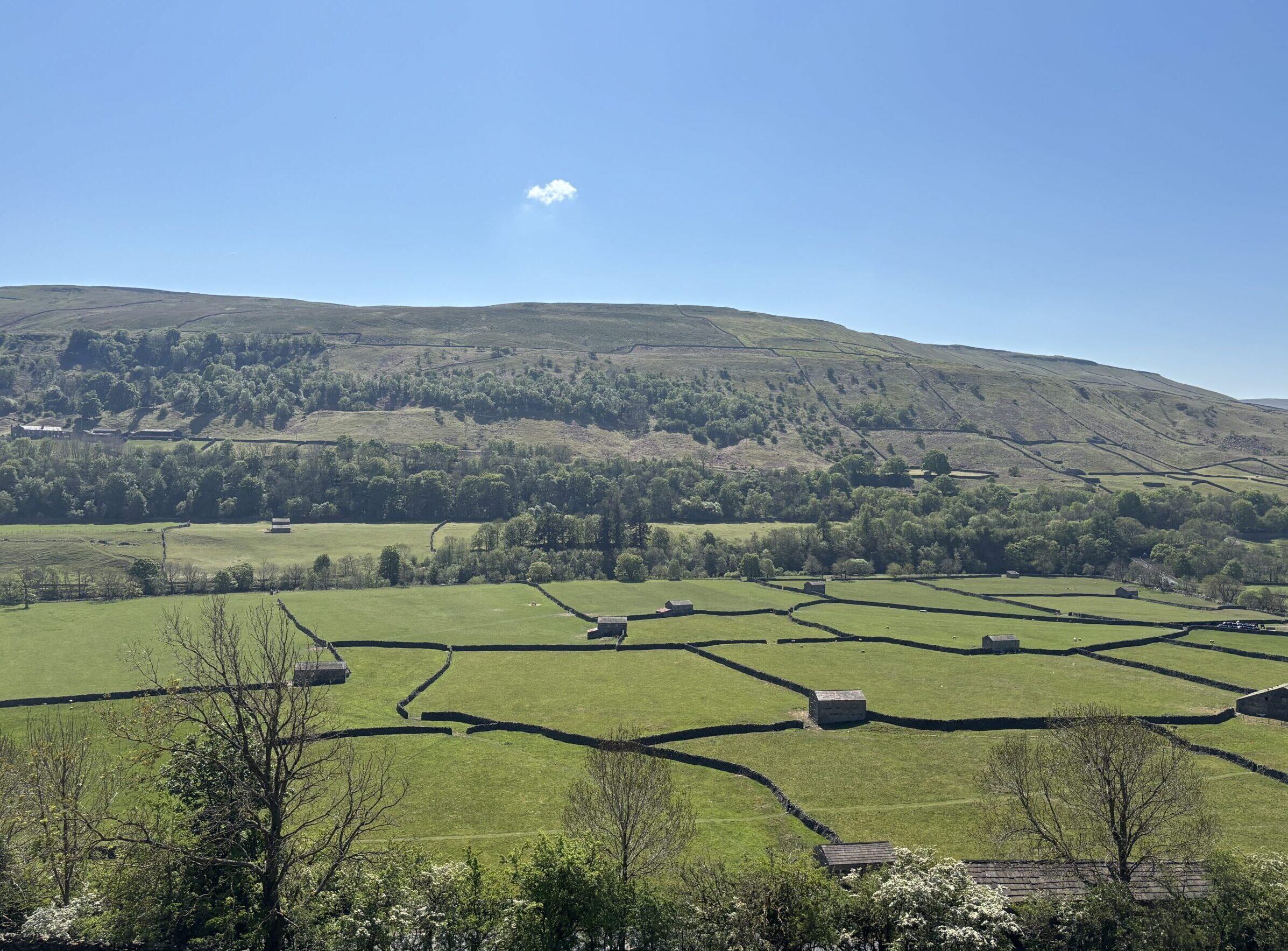
We arrived in to Reeth and checked in to The Black Bull, a traditional inn and the oldest in the village. The owners have restored some life back in to this pub, keeping traditional features including an open fire welcome in the bar. With our bags already waiting for us, we enjoyed an filling evening meal, with more tales from fellow walkers from all over the world.